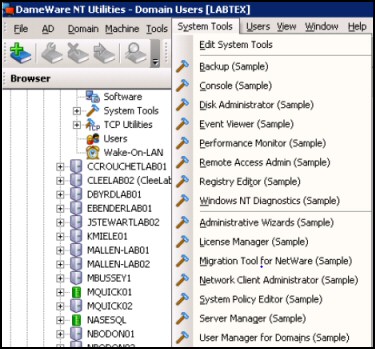

- #SOLARWINDS DAMEWARE MINI REMOTE CONTROL ACTIVATION KEY#
- #SOLARWINDS DAMEWARE MINI REMOTE CONTROL INSTALL#
- #SOLARWINDS DAMEWARE MINI REMOTE CONTROL UPGRADE#
- #SOLARWINDS DAMEWARE MINI REMOTE CONTROL SOFTWARE#
If you access Internet websites through a proxy server, click I access the internet through a proxy server, and enter its proxy address and port.
#SOLARWINDS DAMEWARE MINI REMOTE CONTROL ACTIVATION KEY#
#SOLARWINDS DAMEWARE MINI REMOTE CONTROL SOFTWARE#
To license the software on a computer with Internet access:
#SOLARWINDS DAMEWARE MINI REMOTE CONTROL UPGRADE#
If you want to upgrade your version 10 applications to version 12.0, you do not need to upgrade your license. To evaluate the software, click Continue Evaluation. File nameĭameware Mini Remote Control (64-bit) v12.0 Installer, used for centralized mode deploymentĭameware Mini Remote Control (32-bit) v12.0 Installer, used to deploy all server roles, the Administration Console, and Dameware Remote Support v12.0 in centralized modeĪfter installing the standard version of Dameware Mini Remote Control (DamewareMRC32-St.exe or DamewareMRC64-St.exe), you are prompted to enter the licensing information for your product. You must request these installers from your SolarWinds sales representative. Centralized mode is useful for organizations with a large user base, with large or centralized IT departments, or with multiple Dameware product licenses managed from a single point. License activation occurs on the server level, and users authenticate to the Central Server from any centralized Mini Remote Control installation.
#SOLARWINDS DAMEWARE MINI REMOTE CONTROL INSTALL#
The centralized installation requires you to install and deploy at least the Dameware Central Server. File nameĭameware Mini Remote Control (64-bit) v12.0 Installer, used for stand-alone mode deploymentĭameware Mini Remote Control (32-bit) v12.0 Installer, used for stand-alone mode deployment These installers are available through your customer portal. It is most useful for organizations with a small user base or with small or decentralized IT departments. The stand-alone installation requires each product to be individually activated on each computer.



 0 kommentar(er)
0 kommentar(er)
